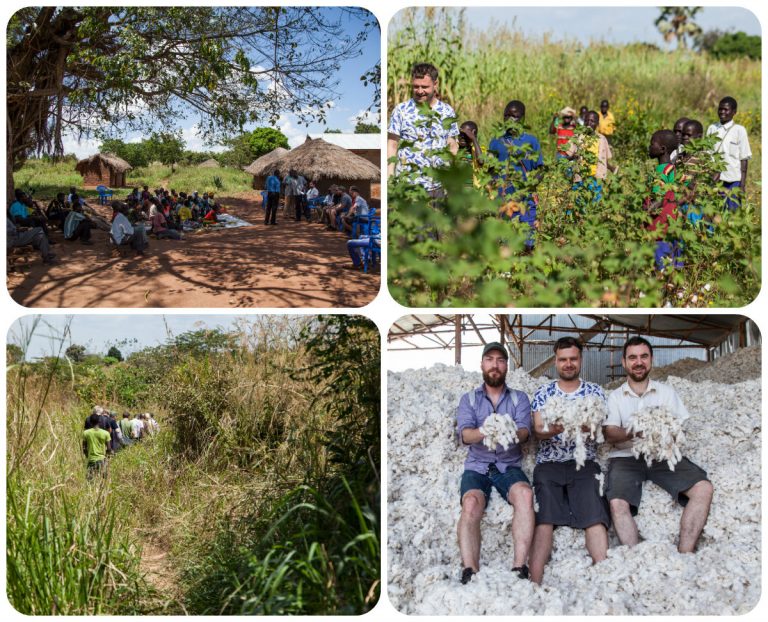
Cotton is a wonderful raw material, which is mainly cultivated in so-called developing countries. Enter new paths and learn how organic cotton cultivation is done in Africa. That was the motto under which the first Lebenskleidung journey to the African continent was happening.
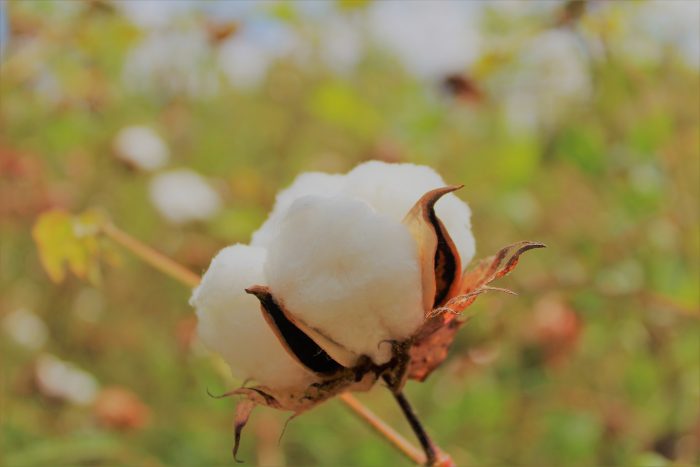
Organic cotton in its pure beauty (Copyright of all pictures: Enrico Rima and Lebenskleidung)
With our partner from Cotonea as well our friends from Kayo & Kato we’ve made our journey to the north of Uganda.
To be more precise, to the Gulu region, which was still struggling 15 years ago with civil unrest and a terrible civil war.
Today, in December 2017, all aid organizations in the world are endlessly coming and going. The United Nations (UN), the Development and Cooperation Corporation (GIZ), the Japanese Aid Organization and many NGOs - all of them are out and about with their pick-up trucks visible at first sight. To help. Build. To support the local population.
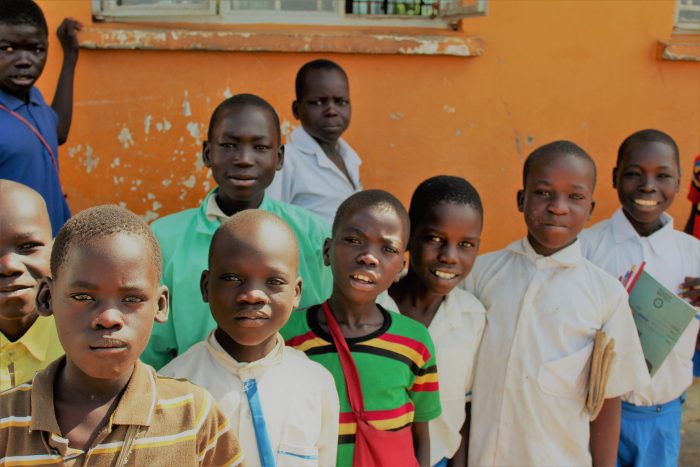
Curious schoolchildren in Gulu
We are here to visit the Gulu Agricultural Development Company (GADC). And together with it some of the meanwhile 80,000 (!) small farmers who grow organic cotton, sesame, chilli, corn and other plants for GADC. Our partner has been supporting the initiative since 2009 and has helped to ensure that the cultivation of organic cotton is worthwhile, that farmers receive fixed purchase prices and, above all, learn how to economically order their own fields in the interests of organic farming.
From the cotton fields of Uganda into the fabric shelf
The path of organic cotton leads from the fields of small farmers over the Ginnery, ie the ginning plant where the seeds of organic cotton are removed and the white cotton balls are pressed into bales, for spinning, knitting or weaving, for dyeing and finally for finishing the fabric. Here in Uganda the value chain is still in its tender beginnings, and the bales pressed in the jar find their way to Europe or Asia to become an organic cotton yarn from which to produce fabric.
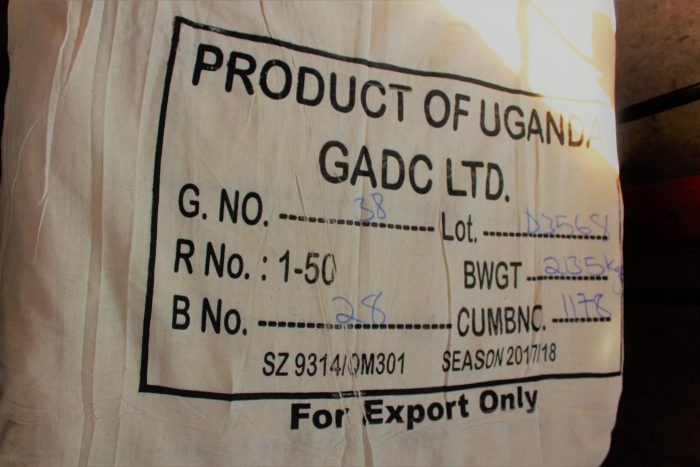
A fabric bale with organic cotton, ready to be shipped
We would like to introduce you to this project in more detail and support it even more in the future, because the long-term sustainability projects now provide tens of thousands of people with modest wealth and resources for education and health. Even in the once completely devastated region of Gulu in northern Uganda, people no longer have to leave their country.
The work of the Gulu Agricultural Development Company (GADC)
A look back. The Gulu Agricultural Development Company (GADC) was founded in 2009 by South African entrepreneur Bruce Robertson. GADC works in the north of Uganda, a region that until then had been shaken by a 20-year civil war. One million people were expelled from their villages during the war and could no longer till their cotton fields. A brutal rebel group, the Lord's Resistance Army (LRA), the name Kony may be well known in the West, caused a lot of bloodshed and the people who were expelled from their villages or fled, lived as a so-called Internally Displaced Person (IDP ), i.e. people displaced in their own country in refugee camps. Their homes were burned to the bottom, their belongings, mostly cattle and tools, were lost. With no access to seeds, a market or credit, it was almost impossible for the displaced peasants to regain hope and rebuild their lives. Cotton was once a secure source of income, but the last economically-operated cotton mill was closed in 1999 as well. The war not only led to huge monetary losses, but also to a huge loss of agricultural knowledge of the rural population.
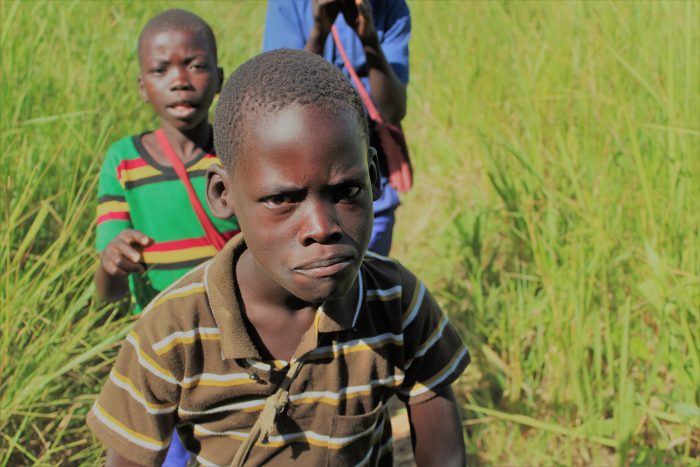
The population of northern Uganda was suffering a lot during the horrible civil war - since 10 years the region has peace
Thus, in its beginnings, GADC devoted itself above all to the revival of the old peasant knowledge as well as the training and further education of farmers in the fields of sustainable agriculture and agriculture as livelihoods. Together with Danida, the Mercy Corps, the UNDP and GIZ, fields in certain geographical regions were built up and new value chains formed. At the behest of the Cotton Development Organization (CDO), a Ugandan government agency dedicated to promoting cotton cultivation in northern Uganda and generating income for the people, Bruce Robertson relocated the cotton mill in 2009 at great risk in operation. In the course of its development, GADC quickly realized that economically, it could not survive on cotton alone. The project has been expanded to include sesame, chilies, sunflowers and corn.
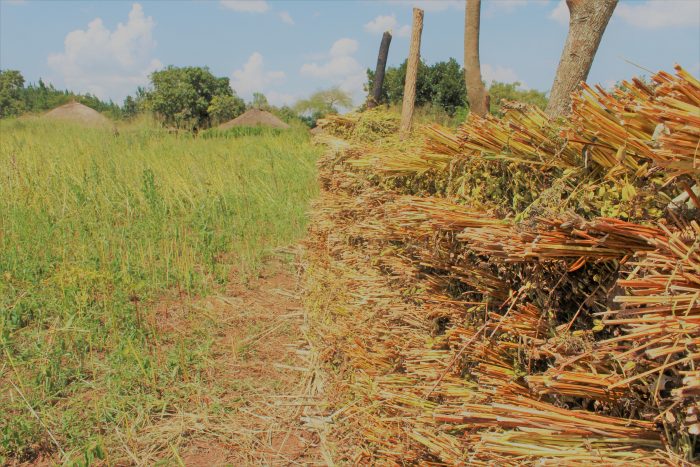
A sesame field with sesame plants drying in the sun

Also very spicy chillies are growing here
An integral part of GADC's work is its unique field network system. The company sources its products from over 80,000 smallholders throughout northern Uganda. These are supported by a network of purchasing agents, who in turn are pre-funded by GADC as independent community entrepreneurs. Through this field network and its partnerships, GADC also offers training for farmers in various fields, such as sustainable agriculture, proper storage of crops, accounting, etc.

Field Officer Peter talking with farmers
Farmers are also certified by GADC through the Fair for Life for Trade (Fair Trade) and Control Union (for GOTS) organizations.
Fair Trade and education opportunities

Fair trade means that farmers learn how to produce good yields in organic farming. The projects buy the products at fair prices and take over the sales. So the farmers have his livelihood, they can finance education and health. The GADC project is organized hierarchically. The farmers apply for cooperation in the project and are registered. A group of about 25 farmers has a lead farmer as primus inter pares (first among equals). Ten of these groups (ie about 250 farmers) form a cooperative. You will get your own account, which manages the fair trade premiums and will be used (paid) by mutual decision. The contact person for the Lead Farmer is the Field Officer. He is employed by the GADC and trains "his" 10 Lead Farmers, who in turn train "their" farmers. Several times a year, he controls the fields of all farmers in his cooperative, logs their work and all the measures they have taken. This procedure is a prerequisite for organic certification.

All activities are recorded
The findings from the controls will be incorporated into the following training courses. All members of the cooperative will learn about seed and pest control, plant care, ecological issues, fertilization and harvesting, crop treatment, marketing, use, pricing and market opportunities. This form of organization and approach helps to increase crop yields and ensure organic quality. The cotton yields are about 450 kg/ha, with the aim of doubling the yield. Young, untrained farmers often start with only 200 to 300 kg/ha.

Organic cotton planst in front of the blue sky
From training and "field" advice, assured harvesting at reasonable prices to fair and secure contract relationships, this is not just an expression of fairness and social responsibility. It also fits in with our vision of sustainable development cooperation, because the know-how that farmers gain through training stays with them, even if prices fluctuate. This creates a solid basis for more independence.

The teaching of the GADC is an integral part of the project
Part of this collaboration among partners is the rule: "No benefit - no reward". It is also an incentive for development. In order to make organic farming more attractive, our partner Cotonea pays a high organic premium on the world market prices. It facilitates the farmers' entry into organic farming and motivates them to do good work.

Cotonea CEO Roland Stelzer talking with Field Officers
Gradually increasing yields per hectare and simultaneously higher selling prices are the reward for the learned knowledge being consistently and patiently implemented. This improves both the economic situation and the life situation of the farmers.

Solar energy brings light into the huts
The cooperative organized by the GADC has great advantages for the farmers. They get free seed, they do not have to go into debt and they do not get into dependency. The farmers lead a self-determined, free life, but still have a contact person who advises them professionally.

One can learn from the old farmers
The organic cotton fields of Gulu
In contrast to many other regions of the world, organic farming is already deeply rooted in the tribal traditions of the people of northern Uganda, the Acholi. The GADC recommends that farmers use as many crop rotation fruits as possible, so that - in addition to cotton - a large variety of crops, such as sesame and chilli, are offered for sale. The marketing of these fruits has meanwhile become very successful and - as well as the development of organic cotton production - in relation to the world market an extraordinary achievement of the GADC. Cotonea has contributed significantly.

Biodiversity at its best
Organic farming takes account of natural laws and uses them in many ways. Plant species "support" each other or not. The knowledge about which plant species can "work together" is used by the organic farmer. Therefore, monocultures are excluded.

In the fields with Enrico
There are fewer pests in "good plant neighborhoods", and if they do, pests are quick to use if they are not applying pesticides. Also used are sacrificial and quench plants, attractants and ecological sprays.

Organic Cotton Friends
Natural fertilizer instead of artificial fertilizer
Mixed culture or crop rotation (cultivation of crops other than cotton at the same time or with a time delay) and the application of manure from own (!) animal husbandry (goats, chickens) increases the number of microorganisms in the soil, relaxes it and increases its fruitability. This way of doing business is CO2-neutral. This is not the case in the production of artificial fertilizer.

Ducks in the cotton field in the cotton field
Protection of valuable ground water
Anything that the farmers put out in the fields (and can not pick up the plants) will eventually reappear in the groundwater. First and foremost are synthetic fertilizers and sprays. So if you fertilize biologically and keep pests at bay with biological agents, you also protect the groundwater.

A butterfly sitting on a cotton plant
Use of own seeds
Naturally developed genetic material is of great diversity, the plants are very resistant and adaptable. In the project in Uganda, the farmers get their seed from the GADC, which wins and selects it directly from the cotton gin. With this seed they contribute to the preservation of organic diversity!

A flowering cotton plant
Neither genetically modified nor hybrid varieties are used, which can lead the farmers into a spiral of dependence on multinational corporations and into debt. This would either not germinate (genetically modified varieties) or lose its bred properties of high yields after the first harvest (hybrid varieties).

The white gold in its pure beauty
The heart of the activities - the ginnery in Gulu
The heart of the activity that gives the farmers access to the market is the old ginnery in Gulu. After many years of war, the ginnery was shut down and unusable. With great financial efforts, it was finally reactivated by GADC in 2009. It is only the coring of cotton that makes it possible to process it into yarn and later into fabrics and textiles, thus securing the farmers' access to the market for their product. 
The Coo-Rom Ginnery in Gulu
The farmers registered in the project bring their harvest to so-called collection points, where the cotton is weighed and the weight recorded.

The cotton is weighted
The centrally collected cotton is finally transported to the ginnery, where it is gutted and pressed into bales.

The collected cotton is being transported into the ginnery

Mechanically tried and tested - the ginnery in Gulu- the ginnery in Gulu

The organic cotton is being cored

The workers of the ginnery

On long conveyor belts the organic cotton is transported to the coring unit
The bales are then sent to a spinning mill for further processing, where the cotton is processed into yarn.

At the end the organic cotton is being pressed into bale form
During coring, the cottonseeds are collected and reused as seed. A large part of the seeds is also processed into cotton oil and the "waste" of it used as feed for the livestock. A zero-waste cycle in its purest form.
Fair Trade organic cotton and finest organic Lebenskleidung fabrics
The bales are processed into yarns from which the finest materials are knitted or woven. The high quality of the organic cotton, which is grown completely naturally and mechanically processed, is also noticeable in the final product. We are very pleased that we can now offer you a variety of great woven fabrics, which were made from just that fair trade organic cotton from Uganda.
In the respective additional information in our shop you will find the information "Origin Fiber: Uganda". Those fabrics are made with organic cotton from this project. Simply use the filter search to find those.
